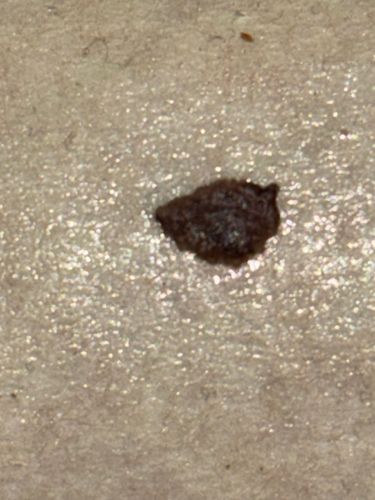Bed Bug (likely a fed adult or nymph)
Scientific Name: Cimex lectularius (common bed bug) or Cimex hemipterus (tropical bed bug), though species cannot be definitively identified from this image.
Order & Family: Order: Hemiptera, Family: Cimicidae
Size: Unfed adults are typically 4-5 mm (0.16-0.20 inches) long, oval, and flattened. After feeding, they become engorged, reddish-brown, and more rounded, reaching up to 6-7 mm (0.24-0.28 inches). The object in the image appears to be a fed bed bug, likely an adult or a late-stage nymph.

Natural Habitat
Primarily indoor environments where humans or animals sleep, such as beds, mattresses, bed frames, furniture, cracks in walls, and electrical outlets. They are found worldwide.
Diet & Feeding
Exclusively blood (hematophagous).
Behavior Patterns
Bed bugs are nocturnal and feed on blood while their hosts (humans or animals) are sleeping. They are highly adept at hiding in small crevices and cracks, making them difficult to detect and eradicate. They are known for their resilience and ability to survive long periods without feeding.
Risks & Benefits
Potential Risks: Bed bugs cause itchy bites, which can lead to skin irritation, allergic reactions, and secondary skin infections from scratching. They do not transmit diseases to humans. Potential Benefits: No known direct benefits to humans or the ecosystem; they are considered pests.
Identified on: 8/29/2025